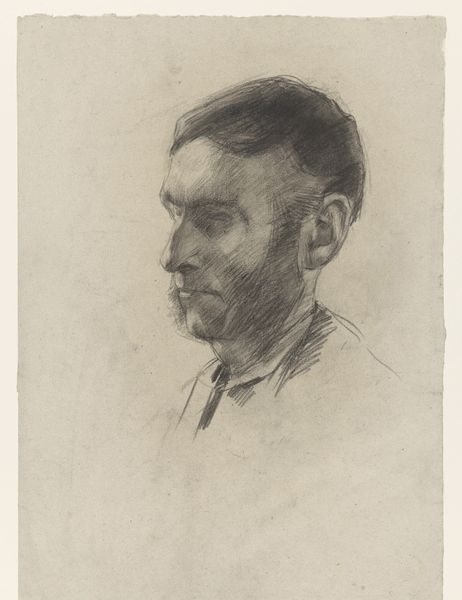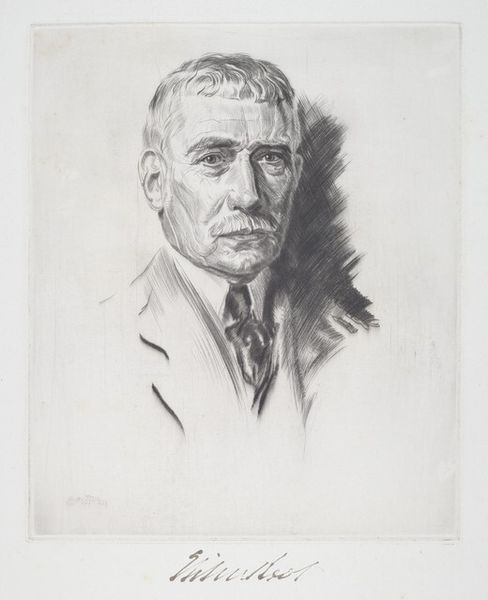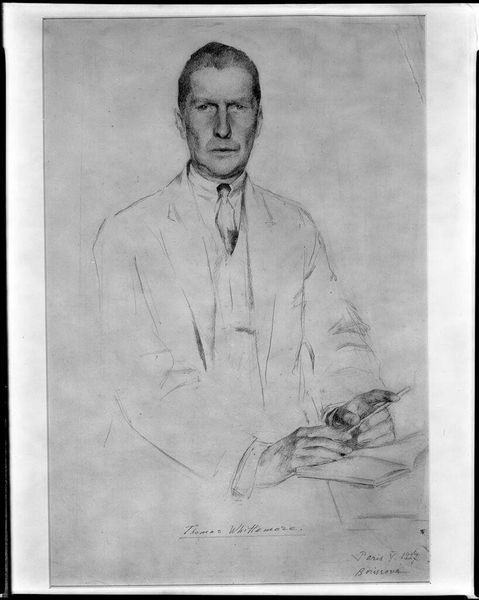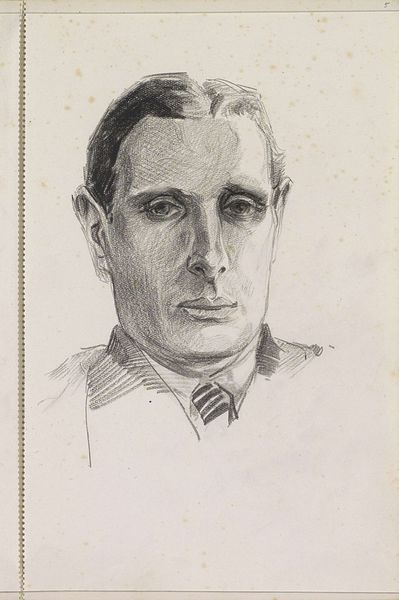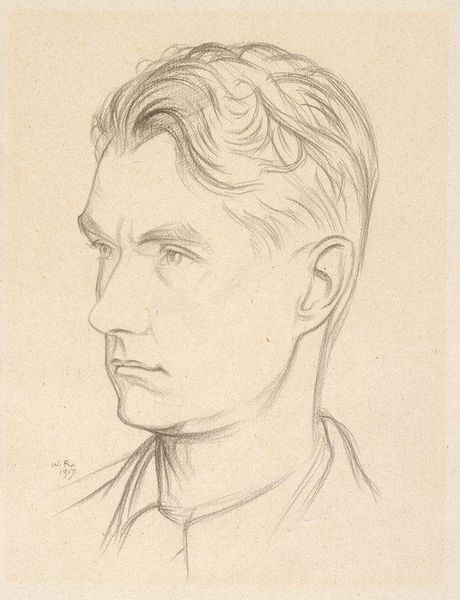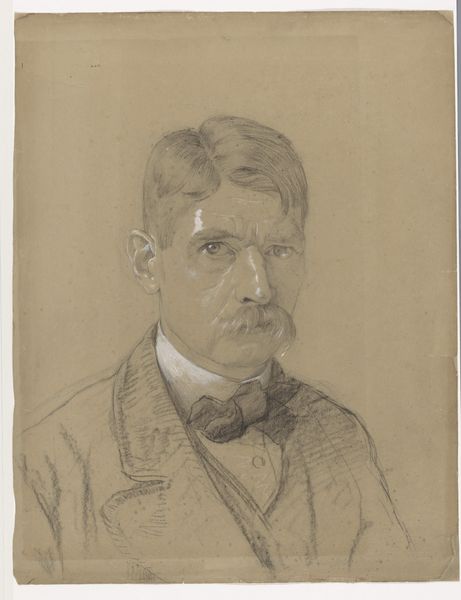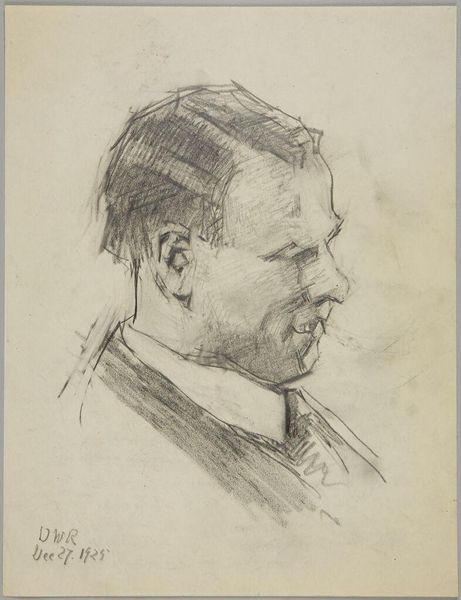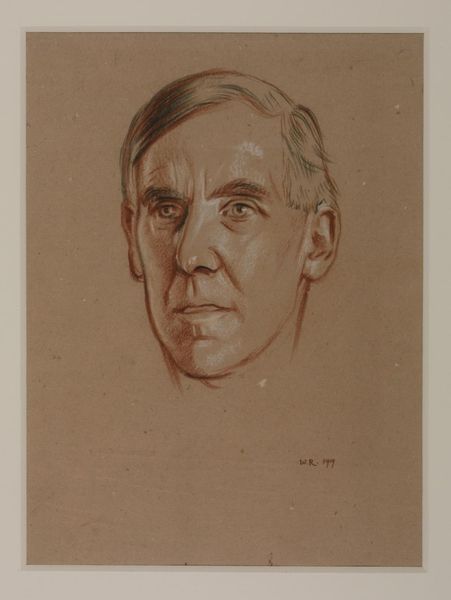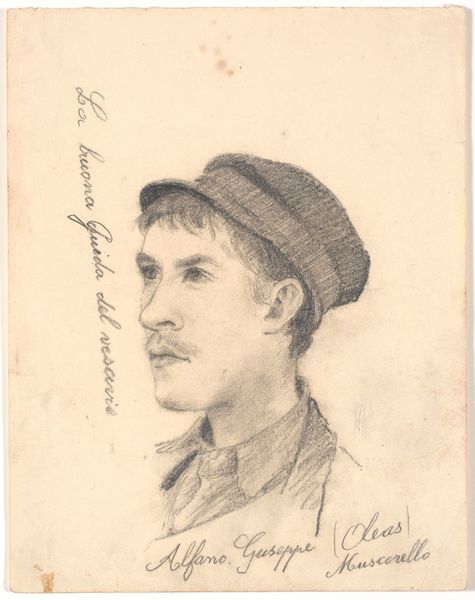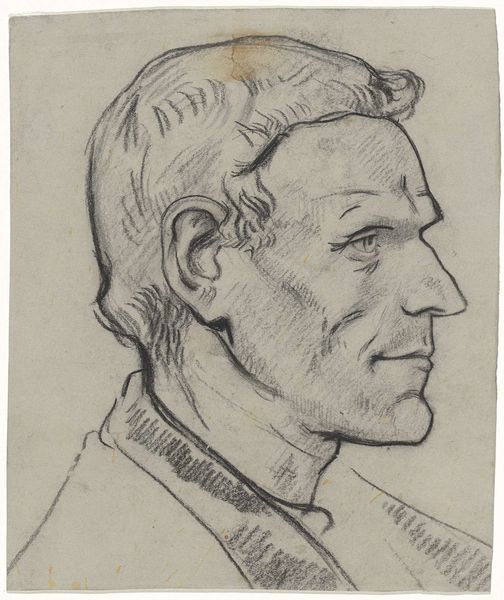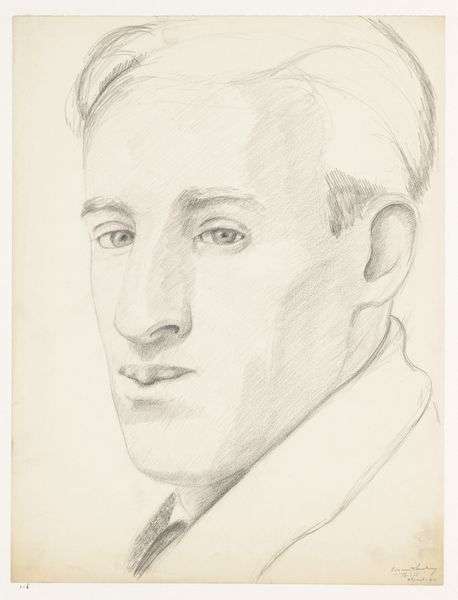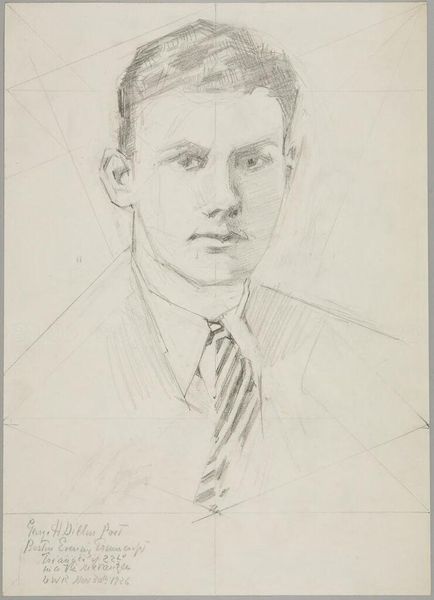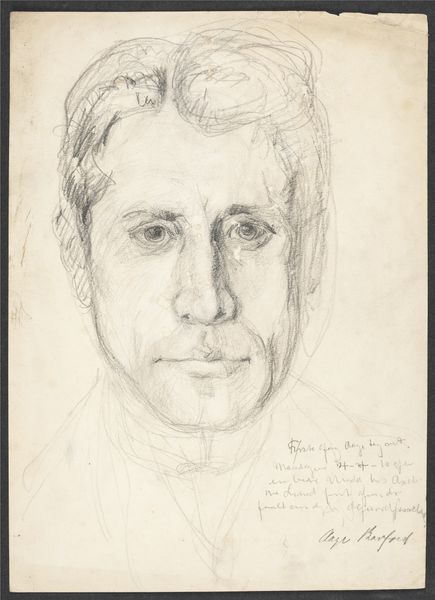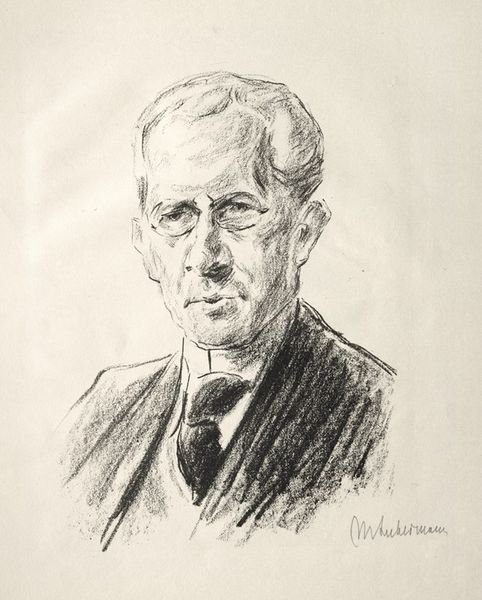
Dimensions: 362 mm (height) x 256 mm (width) (bladmaal)
Johannes Holbek created this self-portrait in January 1892, using graphite on paper. The choice of humble materials is telling. Unlike oil paint, which implies wealth and status, graphite is immediate, accessible, and easily worked. Holbek coaxes a full range of tones from the medium. Notice the smudged shadows in the background, achieved by rubbing the graphite into the paper. This creates an atmospheric effect, softening the edges of the face, while the sharp, clean lines of the nose and mouth give the portrait definition. The slightly coarse paper also adds texture and depth, catching the graphite in its fibres. Although Holbek was trained in the academic tradition, this drawing speaks to the democratization of art making in the late 19th century. Graphite enabled artists to capture fleeting moments and experiment with form, without the pressure of creating a finished, polished product. In its very modesty, this self-portrait captures a sense of artistic freedom. Holbek died young, but this work provides an intimate look at his craft.
Comments
No comments
Be the first to comment and join the conversation on the ultimate creative platform.
